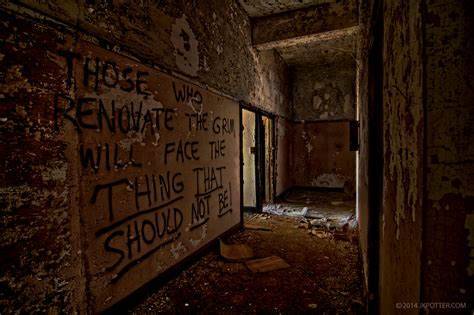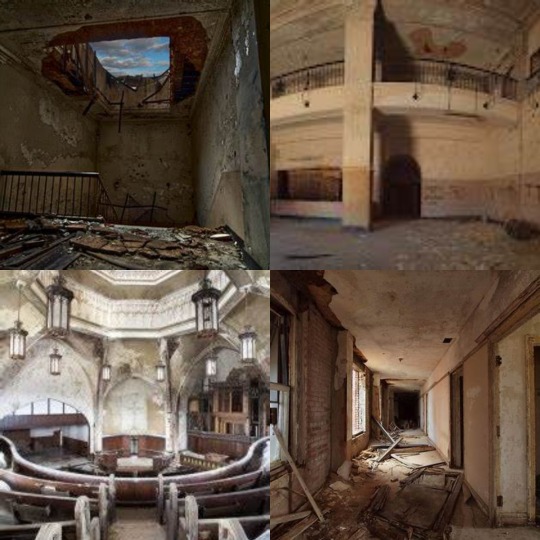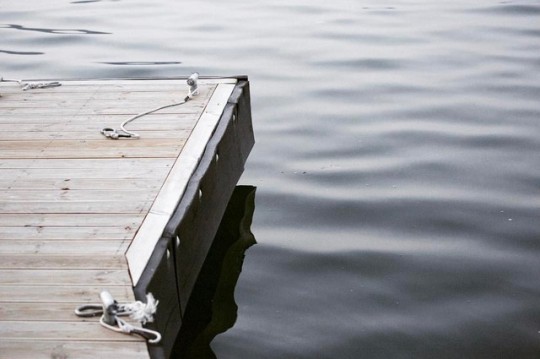#kcmc
Text

u kno i had to do it
#favorite liar#kiwi doodles#billy tag#avarice tag#kiwis dnd adventures#(this is very obviously traced kcmc)
20 notes
·
View notes
Text
Opened in 1925, the Hotel Grim became an iconic symbol of downtown Texarkana, Texas. The hotel was built at a cost of $600,000 and featured 8 stories with 250 rooms. The elegant hotel was designed by architects George Mann and Eugene Stern of Little Rock.
The unique name of the hotel was in honor of William Rhodes Grim. Grim and a group of prominent businessmen planned the project to serve train passengers. Grim was the president of Texarkana National Bank and a member of the board of directors for the Kansas City Southern Railroad. Sadly, Grim died during the planning stages of the hotel and the other developers named the building in his honor.
The massive complex is built in a “V” shape to fit the irregular triangular lot it occupies. The exterior is built of stone, brick and stucco and features an Imperial Spanish tile roof. The ornately decorated lobby featured stone walls and marble wainscoting with a Black Belgian marble base and White Alabama marble floor. The Palm Court reflected a Spanish influence in the design. The Mezzanine level spotlighted by wrought bronze railings included several local businesses including a beauty parlor, barber shop, drug store, coffee shop and private dining room. An elegant roof top garden offered an expansive and breathtaking view of the city. The garden could quickly be converted to a rooftop ballroom. No expense was spared during construction.
The Hotel Grim was the epicenter of booming Texarkana in the 1920s and 1930s. Built during the heyday of the Jazz Age, visitors can almost hear the long forgotten music emanating from what must have been a glorious hotel. The hotel sat on the Texas side of the bustling downtown district and in 1934 local radio station KCMC established a broadcasting studio inside the hotel. Notorious outlaws, Bonnie and Clyde were rumored to have stopped by the hotel on their way to Louisiana where they died in a gunfight with police. The legendary Glen Miller band and other popular big bands of the day performed at the hotel.
Sadly, as the passenger train travel declined so did the Hotel Grim. In 1976 scenes from the movie “The Town That Dreaded Sundown” were shot there. The movie was based on Texarkana’s Phantom Killer. The Hotel Grim closed her doors in 1990.
Now, she looms over the down town district with her blank broken windows and boarded up doors. Even abandoned, the hotel is awe inspiring. Structurally, the old girl remains in good condition, waiting for the world to rediscover her again.










6 notes
·
View notes
Text
KCMC – Kansas City Masonry Contractors Offering Commercial Masonry Services
http://dlvr.it/Sz5vYg
0 notes
Text
KCMC – Kansas City Masonry Contractors Offering Commercial Masonry Services
http://dlvr.it/Sz5rwG
0 notes
Text
KCMC – Kansas City Masonry Contractors Offering Commercial Masonry Services
http://dlvr.it/Sz5rnK
0 notes
Text
Internship ePortfolio - Entry 6
Before my internship I was interested in working within digital media production or graphic design, however, I had no prior experience working in these roles and the internship would be a good opportunity for me to find out if this was an area I would want to continue to build a career in. After the completion of my internship it only furthered my desire to work within digital media production/graphic design and ideally I would like to be working in that area in the immediate future. Thankfully I was offered casual employment with Rainmaker to continue doing that line of work and hopefully if I continue to work hard and provide value to Rainmaker I can land a more permanent role or use my experience to land a role elsewhere.
After meeting with Ella from the Holmesglen Employment Centre we discussed some of my career aspirations, my general preparedness for my post-studying career and my resume. As mentioned, my internship experience provided more clarity on the career or line of work I want to pursue in the immediate future, but our meeting also gave me the chance to think about what I might like to do in the long-term. I hadn’t given as much thought to want I want to achieve in the long-term but I was reminded that it is good to have some sort of idea in mind so I can develop a mental career-progression plan that will help me identify the steps I need to take to achieve those future goals. After some slight consideration I knew that working in a digital production environment was what I would want to continue doing, but working on live sports broadcasts in the US (particularly basketball) would be a long-term goal. Here is a video of the second-by-second production of an NCAA broadcast by ESPN - the exact type of environment I would love to be apart.
youtube
(KCMC Sports, 2020)
Before my internship I would have said that I wasn’t entirely prepared for work post-study. But since the completion of my internship that has changed, and I feel ready and confident in making that transition. It certainly helps that I will be able to pick-up where I left off from my internship with the casual position offered to me by Rainmaker.
A review of my resume was done and while it was mostly fine, some changes were made to continue to make it concise and to-the-point. This is crucial as Burns et al. (2014) explain that many employers will receive a large amount of resumes and are unlikely to spend much of their time going through a resume in its entirety. With my internship now complete it was also a good chance to add that experience to my resume correctly as it will be relevant to future employers in the sports media industry.
Burns, G. N., Christiansen, N. D., Morris, M. B., Periard, D. A., & Coaster, J. A. (2014). Effects of applicant personality on resume evaluations. Journal of Business and Psychology, 29(4), 573-591. https://doi.org/10.1007/s10869-014-9349-6
KCMC Sports. (2020, January 13). Niles Media Group - ESPN Broadcast Behind the Scenes NCAA Men’s College Basketball [Video]. YouTube. https://www.youtube.com/watch?v=6wlz2W77KIM
0 notes
Photo

スーパーシックス、全然乗れてないけど気になってたところを地道にカスタム。ディスクローターをKCMCにしてリアは小径化(160mm→140mm)。タイヤはアジリストチューブレス化。どっちもずっとやりたくてやっと念願叶った。 良いかどうかはまたこれから。 #キャノンデール#cannnondale#スーパーシックスエボ#super_six_evo https://www.instagram.com/p/CmRknyuBgQv/?igshid=NGJjMDIxMWI=
0 notes
Text
Call for Interview UTUMISHI – Public Service Recruitment Secretariat (PSRS)
Call for Interview UTUMISHI – Public Service Recruitment Secretariat (PSRS)
Called for Interview UTUMISHI – Public Service Recruitment Secretariat (PSRS) September, 2022
Public Service Recruitment Secretariat (PSRS) on behalf of Bugando Hospital (BMC), Ocean Road Cancer Institute (ORCI), Kilimanjaro Christian Hospital (KCMC), Benjamin Mkapa Hospital (BMH), Orthopedic Institute Muhimbili (MOI), Tanzania Meteorological Authority (TMA), Contractors Registration Board…
View On WordPress
0 notes
Photo

I’m attending a lecture at #KCMC university (my boyfriend is working there while we are here), and as always I started to #dooddle. Here’s one of the pages. #girlsinanimation #travelwithwork #sketch (at Kilimanjaro Christian Medical University College)
596 notes
·
View notes
Photo

#kilgorecollege #kilgore #student #kcmc #kcgc #maniacs #gameclub
0 notes
Photo

wharf #kcmc #camptongisland #캠프통아일랜드 #다사다랑 (캠프통 아일랜드에서)
0 notes
Video
@lavino_brown @bonbimz3011 @ipic_tz @filbert_leonard #congolese #congomusic #africa #eastafrica #eastafricagottalent #guitar #sologuitar #sebene #rumba #afropop #afrobeats #musica (at Kilimanjaro Christianity Medical Centre KCMC) https://www.instagram.com/p/B1CntdZD328/?igshid=tio88zjr256v
#congolese#congomusic#africa#eastafrica#eastafricagottalent#guitar#sologuitar#sebene#rumba#afropop#afrobeats#musica
1 note
·
View note
Text
A Tanzanian Safari on a Student Budget
One of the main draws for doing an elective in Tanzania was being able to discover the natural beauty of Africa and the diverse flora and fauna that inhabits it. The documentaries I had watched on National Geographic as a kid had imparted in me that no true experience of Africa would be complete without seeing a pride of lions sink their teeth into a straggling gazelle as the shimmering sunsets over the savannah. Disney’s Lion King was also unashamedly my favourite animated movie and so it was almost a no-brainer that a safari was on my bucket list for my trip to Tanzania.

Tracking and spotting camouflaged wildlife is all part of the safari experience.
However, as I soon discovered a Tanzanian safari is not exactly something that can be done on a tight budget. If you do some reading you might find that with enough time and research you can plan your safari by directly organising your own, car and driver-guide when in the area, paying for your own game park fees, organising camping equipment, planning and preparing every meal while on the move all while figuring out where to find where all the animals are. This may slightly reduce the price of the safari but in our minds, there were too many variables coming into this. With limited experience in organising extended overland trips in a foreign country, we decided the best option was to book a safari through a local Tanzanian tour operator and save our money by reducing any third-party costs. This would ensure that we could enjoy our safari and focus on the long game drives without stressing about logistical problems.
A quick google search of “Tanzania Safari” will reveal hundreds of tour companies that advertise various safari packages that range from basic group packages with overnight camping to luxurious private packages that include a bottle of champagne with every meal and stay at the Four Seasons in the Serengeti. This is because for many a safari is a glamourous getaway that you can easily book from a reputable transnational travel agency all from the comfort of your own home.
For us, as a group of young medical students, our main income source came from the odd hours of tutoring each week (and who can forget the generous Youth Allowance from the Australian Government). Admittedly our budget was a little more than the backpack traveler 270 days away from home. However, we knew that if we wanted a sufficiently long safari of the Northern Circuit that would satisfy our wildlife-cravings then forgoing any added luxuries (our dreams of sipping Moët from a hot air balloon over the Serengeti slipping away) and booking with a local Tanzanian operator would be the way to go.

Serengeti means Endless Plains but there was definitely nothing plain about it.
Our 4-day/3-night safari of Tanzania’s Northern Circuit in December 2018 was 640 USD per person (+ extra 20 USD per person for tips). This was for what you could call an all-inclusive safari package at the most basic level (camping safari accommodation, game park entry fees, driver-guide, 4x4 Landcruiser with unlimited fuel, cook/chef, nutritious meals with an assortment of beverages, pick-up & drop-off from Moshi and 2 beers per person per night!). We believe that this would be close to the minimum if not the minimum that one could book a basic Northern Circuit safari package.
A 4x4 Landcruiser with a pop-up top is a must for optimal viewing potential
At over 160 USD per day you can see how a safari can quickly consume through your travel budget. However it’s important to note that over the 4-days we did not have to spend an extra dollar Tanzanian shilling on anything else and need I say that we were well-housed tented, well nourished and well wildlife-ed out by the end of it.
So how did we manage to reduce the price of our safari?
In short:
Booked through a local tour operator based in Moshi
Booked as a group of 5 people
Booked as a group safari (as opposed to a private safari)
As a student undertaking a medical elective at the Kilimanjaro Christian Medical Centre (KCMC) in Moshi, Tanzania the main advantage was being able to meet with local tour operators after arriving in Tanzania. There are many local tour operators that are owned by Tanzanian locals and these generally offered lower prices for similar packages when compared to international travel agencies (they don’t have to pay for marketing, international representatives etc.). While international operators may have a better online presence with more reviews, it’s debatable whether they offer anything of added benefit besides a reliable reputation which may obviously help provide peace of mind for someone booking from another continent.
In fact, we discussed our experiences with other students staying at KCMC who had booked similar packages through other international agencies and our experiences were pretty much the same (same itinerary, same vehicle, same parks and routes, same accommodation, same food).
We booked as a group of 5 and contacted various offices in Moshi via email for their itinerary, inclusions and pricing. We literally found these operators by typing “Safari Moshi” on Google Maps and contacting every single one that came up (the same can probably be done for Arusha). We short-listed several operators based on the aforementioned criteria as well as reviews from TripAdvisor, Google & Facebook.

A quick search in Google Maps reveals all the companies with local offices in Moshi, the same can be done for Arusha.
We then met with the managers of these companies in-person at their offices mainly to confirm all the details and to settle any doubts about their legitimacy. However, if you’re booking from outside Tanzania and flying in for a safari then meeting up with these operators is probably not possible. I think that while having an in-person meeting did add some peace of mind it wasn’t particularly necessary especially with companies with sufficient raving reviews.
As I mentioned before the local company (Joining Safaris) we ended up going with offered and delivered on everything that we had asked. The landscapes were breathtaking, the game drives were exciting, the food was nourishing and the camping much more comfortable then expected (even when it rained for two nights!).
There was one thing that we had to fault though and that was the limited information that the driver-guide would voluntarily impart on us. On these safaris, the driver usually double-ups as the guide. Although our driver-guide was quite knowledgeable and able to spot and recognise animals that we had trouble seeing with our binoculars and zoom lenses he would only relay information when asked directly and kept to himself most of the time. He did manage to track down the Big 5 and we were thrilled when he rushed to secure prime viewing of a quite intense scene involving a pride of lions, a zebra carcass and some jackals. However, a more interactive and engaging guide may have made the experience more educational and enjoyable. From observations of fellow safari-goers, the proactive guides were often involved in the higher-grade packages and their enthusiasm would demand a premium tip.

One of the most intense scenes of our safari in the Ngorogoro Crater - A lion pulling a zebra’s head from its remaining carcass.
Alas other students from KCMC who had paid for a similar basic safari through a more expensive international agency before they arrived in Tanzania reported similar issues with their guide. So it seems that if you value an informative experience then a basic safari package won’t be sufficient for you. However, if you want to witness the magnificence of the African landscape and the animals that thrive in this intricate ecosystem while on a student budget then I guess a little bit of compromise and research is going to be well worth it.

A young male lion sits metres away from our jeep in the Serengeti.
1 note
·
View note
Text
Novel ventilation concepts P2 | TopMedTalk
In part two the conversation moves to more detail about Transnasal Humidified Rapid-Insufflation Ventilatory Exchange (THRIVE). There are also wider questions about "the future of anaesthesia".
Ensure you are now subscribed to TopMedTalk so you never miss out.
Chaired by Mike Grocott Professor of Anaesthesia and critical care at the University of Southampton and Rodney Meeke, recently retired Anaesthesiologist and Intensivist, Cork University Hospital with contributions from David Howard, Professor of Head and Neck Oncology at Imperial College London in 2008 and remains Honorary Consultant ENT/Head and Neck Surgeon at Imperial and UCLH NHS Trust Hospitals, Korle-Bu Hospital, Accra, and KCMC Hospital, Tanzania, Jim Roberts, Consultant anaesthetist & medical innovator at University College London Hospital & Anil Patel, Professor, consultant anaesthetist at The Royal National ENT & Eastman Dental Hospitals, University College London Hospital and DAS professor of anaesthesia & airway management.
Listen Now!
0 notes

